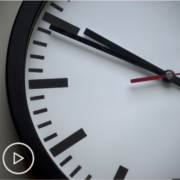How Will I Know if My AML Treatment is Working?
How Will I Know if My AML Treatment is Working? from Patient Empowerment Network on Vimeo.
During acute myeloid leukemia (AML) treatment, specific tests help to gauge a patient’s treatment response. Dr. Pinkal Desai details how diagnostic tests are used in monitoring the efficacy of an AML therapy
Dr. Pinkal Desai is Assistant Professor of Medicine at Weill Cornell Medical College and a hematologist specializing in acute myeloid leukemia (AML) at Weill Cornell Medicine. Learn more about Dr. Desai, here.
See More From The Pro-Active AML Patient Toolki
Related Resources:

|

|

What Is the Patient’s Role in Making AML Treatment Decisions? |
Transcript:
Katherine:
Once a patient has started treatment, how do you know if it’s working? How do you gauge that?
Dr. Desai:
When a patient begins treatment, whatever their regimen is, for the most part, it takes about a month to get into remission. So, initially, with any treatment we would use, the blood counts will actually go down. Everything is down, down, down. That’s important, and it’s good, actually, because if we can’t wipe out these cells, then we’re not going to. The patient’s not going to go into remission. It’s good that these blood counts drop and they keep like that for a month.
After a month, generally, is the first look on an average to see where it is, and that kind of depends on the regimen. For intensive chemotherapy, we take a look in the middle, like Day 14, to see did we wipe out all the leukemia? And can we modify treatment so that whatever might be left behind will clean out? For lower intensity treatments, it’s about a month. So, that’s the first sort of real look at whether a patient is in remission.
And again, when I say, remission is a morphologic criteria that we see the blast count are less than 5 percent, and the cells are – the normal cells are back to what is considered within normal limits or normal for that person’s age. And the idea, at that time, is to not only just confirm remission, but like I was saying, how good is the remission.
So, that’s where MRD testing comes into play. You want to see what you want to find, even if it’s by small numbers, what is the percentage of leukemia that’s left behind. 0.01 percent, 0.001 percent. This is important.
The goal is to ultimately get that down to zero, and that’s how we use it during induction, even when they’re going through consolidation, we’re episodically monitoring with bone marrow or blood testing for some of these molecular mutations that is there continued response from where we started off? And once the treatment is done, we are still, we’re seeing these patients on a regular basis, sometimes doing bone marrow biopsies at regular intervals, to again make sure that there is continued response. And can we see something different, or is there an emerging population of cells that are worrisome, and how do we modify our treatments to try to kill these cells?
What Could Emerging AML Treatment Approaches Mean for You?
What Could Emerging AML Treatment Approaches Mean for You? from Patient Empowerment Network on Vimeo.
In the changing landscape of acute myeloid leukemia (AML) research, how could emerging treatments impact care for patients? Dr. Pinkal Desai shares information about combination therapies, immunotherapy, and clinical trials, and explains the value of MRD in tracking AML response.
Dr. Pinkal Desai is Assistant Professor of Medicine at Weill Cornell Medical College and a hematologist specializing in acute myeloid leukemia (AML) at Weill Cornell Medicine. Learn more about Dr. Desai, here.
See More From The Pro-Active AML Patient Toolki
Related Resources:

|

|

AML Treatment Decisions: What’s Right for You Resource Guide |
Transcript:
Katherine:
Are there emerging approaches for treating AML that patients should know about?
Dr. Desai:
So, there are several, and this is where there’s lots of lots of new drugs that have been approved. A lot of drugs in the pipeline. And within the categories, you can divide up where the advances are being made in several categories. So, the first one is, can you make a better induction regimen? So, how can you combine chemotherapy or hypomethylating agent plus venetoclax combination?
Can you add more targeted agents to these bad points to improve the chances of remission and to keep the patients in remission? So, that’s one aspect of it, that this is important.
There’s obviously this whole concept of immunotherapy of AML, where there’s a lot of antibodies treatment or drugs that affect the immune modulation that are being used both in up-front leukemia, in many times in the older patients, itself. There are clinical trials, obviously.
And also, in the relapse setting, there are CAR-T cells being used in leukemia therapy in the relapse setting. This is important, and a lot of new drugs are being used in the relapse setting. So, there’s this whole new sort of portfolio of clinical trials and treatment options for patients.
And the third aspect, which is, I would say, very important and as important as using better drugs, is to be able to quantify how the patients are responding to these treatments. Because we don’t want to start treatment, and then be blind about the kind of responses they’re getting.
There’s a whole new concept, what we call MRD measurements, or minimal residual disease, or measurable residual disease, MRD monitoring. That’s very important. So, when a patient starts with chemotherapy, and then you have subsequent bone marrows, even if they’re in remission, the quality of remission matters. The amount of MRD or amount of leukemia that’s left behind matters. And how do we direct our treatments to clean up that MRD? And how do we monitor this MRD, so that we can see what happens in the future? Many times, MRD can tell us that a patient’s going to relapse six months later. And how do we use that information?
So, these are very important aspects of monitoring of treatment that is important, and to measure MRD, not just by looking at the cells themselves, but using the patient’s own signature of molecular mutations that we found at baseline at the time of diagnosis. And how do we keep an eye on that?
This is another new world and new ways to figure out how best to use new drugs, maintenance approaches, better consolidation approaches, and how do we use MRD to mix all of these together to get the best possible outcome for these patients.
I think we’ve seen tremendous progress in leukemia, just over the last five years. We went from pretty much having two drugs to treat leukemia, chemotherapy, 7 and 3, and some hypomethylating agents, to a flurry of 15 new approvals. We now have targeted therapies. We have new clinical trials. I’m very hopeful that the combination of all of the things that we’re talking about, how to monitor patients, how to best utilize stem cell transplants. We’re entering a new age in leukemia, and I’m hopeful that with the advent of all of these drugs and what we know about leukemia, we can actually have a very good shot now to improve cure rates in leukemia.
AML Treatment Approaches: What You Should Know About Your Options
AML Treatment Approaches: What You Should Know About Your Options from Patient Empowerment Network on Vimeo.
What should acute myeloid leukemia (AML) patients and care partners know about treatment options? Dr. Pinkal Desai shares information about frontline treatments, targeted therapies, combination therapies, and clinical trials, and explains an important clarification regarding a newly approved oral hypomethylating agent.
Dr. Pinkal Desai is Assistant Professor of Medicine at Weill Cornell Medical College and a hematologist specializing in acute myeloid leukemia (AML) at Weill Cornell Medicine. Learn more about Dr. Desai, here.
See More From The Pro-Active AML Patient Toolki
Related Resources:

|

|
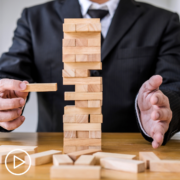
Understanding Risk in AML: How Molecular Testing Affects Treatment Option |
Transcript:
Katherine:
So, in looking at a treatment plan, we’ve discussed the factors that go into that choice. And then, you’ve also just covered some treatment approaches and who they might be right for. So, you’ve talked about chemotherapy. You’ve talked about stem cell transplant. What about targeted therapies and also clinical trials? Where do they fit in?
Dr. Desai:
Right now, if somebody’s diagnosed with new AML or newly diagnosed leukemia, and they are eligible for intensive chemotherapy of the approved agents, the one targeted therapy that does make a difference is midostaurin, which is a FLT3 inhibitor.
And patients who do have a FLT3 mutated leukemia, the standard of care is treatment with intensive chemotherapy in combination with midostaurin. So, this is where chemotherapy’s combined with the backbone of the targeted therapy.
There are clinical trials of other targeted therapies that are being combined with frontline treatment. That frontline treatment might be intensive chemotherapy or more of the hypomethylating-based therapy, which is what we call lower intensity therapy. So, these are where the clinical trials are asking the question that can be just how midostaurin was combined with chemotherapy.
Can we combine other targeted therapies with the backbones that currently exist? Chemotherapy or lower intensity hypomethylating agents. And can we combine them to improve the chances of going into remission and staying in remission?
I would say clinical trials are extremely important. Almost any stage of leukemia, whether it’s a new diagnosis, whether it’s second-line or relapse, it’s important, because these questions that are being asked are very relevant. How do we improve upon the existing known remission rates and survival in leukemia?
There are targeted therapies available for IDH inhibitors that are being combined. There is also a newly approved BCL2 inhibitor, venetoclax, which is used in combination with hypomethylating agents, that have shown survival advantage over single agent.
Hypomethylating agents, anybody who’s older, we are now combining the venetoclax with hypomethylating agents for what we call lower intensity induction treatment. And there are several others in the making. We have TP53 inhibitors.
As we talked about this, that leukemia is not one diagnosis, really. AML has several, several, several subtypes, and once we find out what makes that particular patient’s leukemia tick, and if you have a targeted inhibitor towards it, it’s logical that you would want to combine it with what the backbone of treatment is, and that’s where clinical trials are extremely important in asking most relevant questions and improving patient survival.
Katherine:
Dr. Desai, I learned that oral azacitidine was recently FDA approved. What does that approval mean for patients and who is it right for?
Dr. Desai:
So, oral… So, azacitidine. For patients who may or may not know this, azacitidine has been approved in the IV or subcutaneous formulation for treatment of myelodysplastic syndrome and leukemia.
And this is, when I was saying that there is a lower intensity treatment of hypomethylating agents, that’s one of the drugs, azacitidine. And we use it for induction treatment in patients who do not qualify for intensive chemotherapy in AML.
So, oral azacitidine has been currently approved for older patients who have gone through intensive chemotherapy.
The trial was done in patients who did not have prior hypomethylating exposure of any kind, so people who had not seen any IV or subcutaneous azacitidine, they had leukemia, they get the intensive chemotherapy, finish the induction part, and the, what we call, consolidation part, which is the cleaning up with more additional cycles of chemotherapy.
Once that is done, the old standard of care was to not do anything, so these are obviously for patients who are not transplanted. So, once somebody, just to give a background on this, if somebody’s in remission and they’re transplant eligible, we make a decision whether they should go for transplant or they should get some more chemotherapy rounds. Both are consolidation of some kind, transplant or chemotherapy.
So, let’s say somebody went through induction, got into remission, and it was decided that they’re not candidates for transplant, or the patient didn’t want to go through a transplant, and you go for the consolidation. And the old standard was, after that, to do nothing. And oral azacitidine was tested in this situation, where half the patients got oral azacitidine as maintenance. It was given as pills, to take it for two weeks out of a 28-day cycle.
So, every month, you take it for 14 days. And half of them didn’t get the drug, oral azacitidine. And the drug was recently approved for FDA for having a survival advantage over the standard of care, which is to do nothing after consolidation is over.
So, in other words, this is currently available for patients, older patients, who’ve gone through induction chemotherapy, and/or consolidation, and then finished it. Then, you start this oral azacitidine for keeping this remission going on longer. And that’s where the niche of this drug is.
It is very, very important to understand that oral azacitidine has a very different kinetic in the body than IV azacitidine. So, I think people, many times, get confused between is IV the same as oral? They are totally different drugs and have a different way it affects the bone marrow.
So, they’re not to be interchanged for that indication. Oral azacitidine has been strictly approved for maintenance of remission, post-chemotherapy.
What Is the Patient’s Role in Making AML Treatment Decisions?
What Is the Patient’s Role in Making AML Treatment Decisions? from Patient Empowerment Network on Vimeo.
What role do acute myeloid leukemia (AML) patients have in their treatment decisions? Dr. Pinkal Desai explains factors that go into decision-making and how patients may help guide the treatment option that’s best for them.
Dr. Pinkal Desai is Assistant Professor of Medicine at Weill Cornell Medical College and a hematologist specializing in acute myeloid leukemia (AML) at Weill Cornell Medicine. Learn more about Dr. Desai, here.
See More From The Pro-Active AML Patient Toolki
Related Resources:

|

|

Being Pro-Active in Your Care: Key AML Testing to Advocate For |
Transcript:
Katherine:
What is the patient’s role in this decision?
Dr. Desai:
I think it’s important for patients to understand why the decisions are being made or what goes into the decision-making. Because the patients would appreciate, if they know, that these are the genetic subtypes, and this would be the best sort of approach for them.
So, from a patient’s side, their role is, 1) to understand all the factors that go into the decision-making. And the second aspect, which is important, is their own values and their own decision on what treatment they would like to have.
So, there are – sometimes, it’s very white and black. There are many times where it’s a gray zone, in the sense that there is a best treatment that’s available, that the oncologist would discuss, but it’s also possible to choose between two different kinds of therapy options.
If the patient is eligible, for example, for both intensive and non-intensive treatment, then what would they prefer based on what’s going on in their life? Whether they want to be hospitalized for 30 days for intensive induction or not? Do they want to do this out-patient? A lot of these things are important, and they have to be involved with this.
The third aspect, which is very important from a patient standpoint, is the need for transplant. So, patients who are younger and transplant eligible for leukemia that has a higher risk of coming back, we do recommend a stem cell transplant, so that the patients have to understand the process of stem cell transplant.
Sometimes, it’s slam dunk that a transplant is needed, but there are certain times where you could or could not go for it, and this is where the patient’s choices and values are extremely important, that once they hear all of this information, they would decide whether they should or should not go for stem cell transplant.
Choosing an AML Treatment Path: What Should You Consider?
Choosing an AML Treatment Path: What Should You Consider? from Patient Empowerment Network on Vimeo.
What should be considered when choosing an acute myeloid leukemia (AML) treatment path? Dr. Pinkal Desai explains the factors that are considered to determine the best treatment for an individual patient.
Dr. Pinkal Desai is Assistant Professor of Medicine at Weill Cornell Medical College and a hematologist specializing in acute myeloid leukemia (AML) at Weill Cornell Medicine. Learn more about Dr. Desai, here.
See More From The Pro-Active AML Patient Toolki
Related Resources:

|

|

AML Treatment Decisions: What’s Right for You Resource Guide |
Transcript:
Dr. Desai:
Now, in terms of how we decide treatment, so, there is the leukemia aspect of it, of the biologic indicators of leukemia, and there’s obviously the patient. Because everybody is different. There are patients who are coming in at various ages, like you said. Age is a very important thing to look at, because if you’re younger, the patient’s younger, then they’re usually eligible for what we call intensive chemotherapy. And if the patient is older, they may not be able to handle intensive chemotherapy, and in which case, the induction treatment or the first treatment, we call induction treatment, is basically the treatment we give to get you into remission.
So, the induction treatment decision is based largely from a patient aspect on age.
Whether to go with intensive induction chemotherapy, or with lower intensive chemotherapy, depending on the person’s age.
Now, age is… There is a loose definition of what is considered older age, but we generally say over 75, patients cannot handle intensive chemotherapy. Under 75, under 70 for sure, they’re eligible for intensive chemotherapy, but it’s a biological continuum. So, there are patients who are much healthier, even at older ages, and much older at younger ages. So, we take into consideration not just the age, but also what else do they suffer from? Do they have other comorbidities? Is the heart okay? Do they have kidney damage? Do they have lung damage from previous comorbid illness? And that all goes into figuring out what kind of treatments can they handle.
And that’s the patient aspect of it. Then there’s the biologic aspect of the leukemia itself. Leukemia, the chromosome type. There are leukemias that respond extremely well to intensive chemotherapy. So, you’d figure that kind of treatment for it. Within the molecular subclassification, as we said, there are mutations in certain genes, like FLT3 and IDH. There are targeted treatments towards that, so we look at all of these genes to figure out what is the best mix of chemotherapy, targeted therapy, lower intensity therapy, to look at and combine so that we can have the best chance of being in remission, and to continue to be in remission.
What Are the Goals of AML Treatment?
What Are the Goals of AML Treatment? from Patient Empowerment Network on Vimeo.
When it comes to acute myeloid leukemia (AML), what are the goals of treatment? Dr. Pinkal Desai defines the role of remission and the specific goals of treatment for AML patients.
Dr. Pinkal Desai is Assistant Professor of Medicine at Weill Cornell Medical College and a hematologist specializing in acute myeloid leukemia (AML) at Weill Cornell Medicine. Learn more about Dr. Desai, here.
See More From The Pro-Active AML Patient Toolki
Related Resources:

|

Being Pro-Active in Your Care: Key AML Testing to Advocate For |

AML Treatment Decisions: What’s Right for You Resource Guide |
Transcript:
Katherine:
Dr. Desai, when deciding on a treatment approach with a patient, I imagine you have to consider a number of factors, like a patient’s age and their overall health. Let’s walk through these considerations, and we’ll start with treatment goals. What does that mean, exactly?
Dr. Desai:
So, the first treatment goal is to get into remission. Patients with leukemia will have abnormal blood counts, they don’t feel well, they have a risk of infection, and all of that is only going to get better if you can get into remission.
And remission means that the bone marrow has a blast count less than 5 percent. Now, remember, we talked about if it was over 20, it’s considered diagnosis of AML. So, we want it gone under 5 percent, preferably zero. And we want all the blood counts that are abnormal to normalize back to what it would be for a normal person.
So, that’s the sort of definition of remission, and we want to get there, because ultimately, patients feel extremely good once they go into remission. They feel fine. The risk of infection goes away. It is absolutely important for long-term quality of life and survival. The first goal is to get into remission.
The second goal is to keep that remission going, for as long as possible, and also increase the chances of cure.
So, going into remission does not mean that a patient is cured of leukemia. It means that we’ve taken the first step of knocking the leukemia down to its knees, but there are still a few cells that are hanging out, and they’re still hiding. And the rest of the treatment and approach is to try to kill these cells and improve the chances of cure. So, and generally we say, once you get into remission you stay in remission, and when you’re past that five-year mark, we say leukemia is cured.
So, the first goal is get into remission. Second, keep yourself in remission, and that’s the whole sort of few things that we look at.
AML Treatment Decisions: What’s Right for You?
AML Treatment Decisions: What’s Right for You? from Patient Empowerment Network on Vimeo.
When considering therapy for acute myeloid leukemia (AML), what determines the best treatment for YOU? In this Pro-Active AML Patient Toolkit webinar, Dr. Pinkal Desai reviews factors that affect AML treatment decisions, current AML treatments and emerging research.
Dr. Pinkal Desai is Assistant Professor of Medicine at Weill Cornell Medical College and a hematologist specializing in acute myeloid leukemia (AML) at Weill Cornell Medicine. Learn more about Dr. Desai, here.
See More From The Pro-Active AML Patient Toolki
Related Resources:

|

|
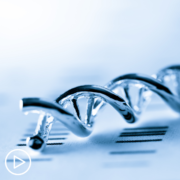
|
Transcript:
Katherine:
Hello and welcome. I’m Katherine Banwell, your host for today’s program. Today we’ll discuss how you can be proactive in your AML care and work with your healthcare team to find the best treatment path for you. Joining me today is Dr. Pinkal Desai. Welcome. Would you please introduce yourself?
Dr. Desai:
Hello. I’m Pinkal Desai, a leukemia physician at Weill Cornell Medicine, and I’m happy to join this program and help in any way possible.
Katherine:
Thank you. A reminder that this program is not a substitute for medical advice. Please refer to your healthcare team about what might be best for you. Well, Dr. Desai, let’s start with the basics. What exactly is acute myeloid leukemia?
Dr. Desai:
So, acute myeloid leukemia or AML is a malignancy or a cancer of the bone marrow. So, we all know that bone marrow is something that’s present in all of our bones.
It is the collocal factory, where all of our cells are being made. White cells, hemoglobin, platelets and all of our rib cages, thigh, big bones, think about that, and there’s bone marrow in it. And sometimes, and we don’t always know the reason why AML occurs, and we’ll talk about that later, I’m sure, but what happens is some stem cells or mother cells, as we can call them, whose normal job is to make a mature progeny, something goes wrong. There’s genetic damage that happens, and what ends up happening is this AML blasts, or immature cells, that sort of stop making mature progeny. And what they start doing is dividing in an immature phase.
And that takes up all the bone marrow function, the blood counts drop, patients can have pain, and usually, when you have a bone marrow that is not functioning, you’re at risk of infections, fatigue from the low blood count, and that’s many ways that AML presents. So, that’s pretty much how it begins, and it’s really acute in the sense that these cells are dividing rapidly, so you don’t sit around for months feeling nothing. Usually, it comes to the forefront in some way or the other.
Katherine:
Other than a complete blood count, what additional testing should take place following an AML diagnosis?
Dr. Desai:
So, a blood count or CBC is just a hint that there might be AML. It’s certainly not diagnostic.
But when you see that there are some abnormality in blood count, and there might be the presence of these immature cells or blasts in circulation, there is suspicion that this is acute myeloid leukemia. The diagnosis, the gold standard for diagnosis, is a bone marrow biopsy, which is a procedure that can be done out-patient or in the hospital, depending on where the patient is. It takes about 15 minutes, where we take a sample out of the hip bone, and look at the cells. This is where bone marrow is being made, so you’re going to exactly where the problem lies, and seeing if the blast count is increased.
So, the diagnosis of AML is established when the blast count is over 20% in the bone marrows. And normally, it needs to be less than 5%. And if it’s over 20%, that’s the diagnosis of AML. Whether it’s over 20% in the bone marrow or in the peripheral blood.
It doesn’t matter, one way or the other. This is a diagnosis of AML, but you do need a bone marrow biopsy to confirm diagnosis of AML.
Katherine:
What about genetic or molecular testing? Is that done?
Dr. Desai:
That is absolutely done, and it’s extremely important that this is done. AML diagnosis is just one part or the first step of saying somebody has leukemia. There is a slew of other tests that are important, and we generally consider, within the genetic tests, we generally consider two kinds of testing. One is the cytogenetics, or the karyotype analysis, which looks at the chromosomes in our bodies.
So, leukemia can be associated with big chromosomal changes, and that’s important to recognize. And the second one is the molecular testing, and we’ll go over both of them.
The chromosomes, or the karyotypic analysis, the vast majority of leukemia patients have a normal chromosome type, but there are certain recurrent abnormalities in chromosomes that we see in leukemia, and that’s important to know for a variety of reasons; Treatment decisions, prognostication.
And the second part of it, the molecular, these are actually genetic routine analysis, and this is not somebody – it doesn’t mean, when we say genetic testing, it’s not the patient’s own normal genetic type. So, we’re not looking for what they have inherited. Most of leukemia is actually a random event, and it’s not inherited. We’re talking about genetic damage that the leukemia cells have within themselves.
It gives us the signature of the leukemia, and it helps us understand what genetic abnormalities are present in the leukemia. There are several panels, 50 to 100 genes, but there’s usually recurrent genetic damage that leukemia cells have.
And you want to know that, because again, like karyotype, this is important in treatment decisions, and also in the prognostication and prediction in the future.
Katherine:
Dr. Desai, is there a high risk and a low risk AML? And if so, what are the indicators?
Dr. Desai:
So, in terms of when we talk about risk of leukemia, many patients, when they come, they frequently ask what stage this is, which is generally not how leukemia is categorized, unlike lung cancer, or breast cancer, or any of the solid tumors. Leukemia is in your blood and in your bone marrow, so it’s kind of like all or none to some extent. When we talk about risk in leukemia, we’re talking about what is the chance of this leukemia coming back in the future. So, is the chance high, intermediate, or low?
And that’s how we categorize leukemia, into these three sort of risk categories, low risk, intermediate risk, and high risk. These risk categories are made up.
We decide these based on information from two aspects. One is the chromosomes, which we talked about. There are certain good risks of chromosomal abnormalities as well, where, for example, poor binding factor leukemias, where these leukemias tend to respond very well to chemotherapy. There are some higher risk, that the chances are higher to come back. And then, the middle category of intermediate risk, where it’s sort of in the middle.
The molecular subtype, or the molecular classification of AML is extremely, extremely relevant, because it gives you pretty much your own signature, and the patient sort of specific, personalized risk of whether this is going to have a high, intermediate, or a low risk to come back.
So, it’s a combination of chromosomes, and the molecular subtype, which is extremely important in figuring out the risk category.
Now, in the course of the treatment and decision-making of leukemia, we don’t have – we’ll have the chromosome information quite early, usually within the first two to three days, but the molecular information, some of it comes back pretty fast, like in a couple days from the testing. But many of these tests, the full panel comes back about 14 days after we do the original bone marrow biopsy. Some of these decisions on whether this is high risk or low risk is relevant in the long run. These decisions happen later, and you don’t have to wait for the treatment, obviously. This is more for what happens after a patient goes into remission.
But there are certain molecular genes that are very important in deciding treatment up front, and those we expedite, and they are back usually before treatment decision is made. For example, FLT3 ITD or FLT3 TKB.
These are two genes where the up-front treatment decision changes, depending on the presence or absence of this gene. So, you really, really do want to know this information early on.
Chromosomes you absolutely need it before treatment begins, because there are several options of leukemia treatment that are specific to certain chromosome subtypes. So, that’s like the basic information you need to have before making any treatment plans.
Katherine:
Dr. Desai, when deciding on a treatment approach with a patient, I imagine you have to consider a number of factors, like a patient’s age and their overall health. Let’s walk through these considerations, and we’ll start with treatment goals. What does that mean, exactly?
Dr. Desai:
So, the first treatment goal is to get into remission. Patients with leukemia will have abnormal blood counts, they don’t feel well, they have a risk of infection, and all of that is only going to get better if you can get into remission.
And remission means that the bone marrow has a blast count less than 5%. Now, remember, we talked about if it was over 20, it’s considered diagnosis of AML. So, we want it gone under 5%, preferably zero. And we want all the blood counts that are abnormal to normalize back to what it would be for a normal person.
So, that’s the sort of definition of remission, and we want to get there, because ultimately, patients feel extremely good once they go into remission. They feel fine. The risk of infection goes away. It is absolutely important for long-term quality of life and survival. The first goal is to get into remission.
The second goal is to keep that remission going, for as long as possible, and also increase the chances of cure. So, going into remission does not mean that a patient is cured of leukemia. It means that we’ve taken the first step of knocking the leukemia down to its knees, but there are still a few cells that are hanging out and they’re still hiding. And the rest of the treatment and approach is to try to kill these cells and improve the chances of cure. So, and generally we say, once you get into remission you stay in remission, and when you’re past that five-year mark, we say leukemia is cured.
So, the first goal is get into remission. Second, keep yourself in remission, and that’s the whole sort of few things that we look at.
Now, in terms of how we decide treatment, so, there is the leukemia aspect of it, of the biologic indicators of leukemia, and there’s obviously the patient. Because everybody is different. There are patients who are coming in at various ages, like you said. Age is a very important thing to look at, because if you’re younger, the patient’s younger, then they’re usually eligible for what we call intensive chemotherapy. And if the patient is older, they may not be able to handle intensive chemotherapy, and in which case, the induction treatment or the first treatment, we call induction treatment, is basically the treatment we give to get you into remission. So, the induction treatment decision is based largely from a patient aspect on age.
Whether to go with intensive induction chemotherapy, or with lower intensive chemotherapy, depending on the person’s age.
Now, age is… There is a loose definition of what is considered older age, but we generally say over 75, patients cannot handle intensive chemotherapy. Under 75, under 70 for sure, they’re eligible for intensive chemotherapy, but it’s a biological continuum. So, there are patients who are much healthier, even at older ages, and much older at younger ages. So, we take into consideration not just the age, but also what else do they suffer from? Do they have other comorbidities? Is the heart okay? Do they have kidney damage? Do they have lung damage from previous comorbid illness? And that all goes into figuring out what kind of treatments can they handle.
And that’s the patient aspect of it. Then there’s the biologic aspect of the leukemia itself. Leukemia, the chromosome type. There are leukemias that respond extremely well to intensive chemotherapy. So, you’d figure that kind of treatment for it. Within the molecular subclassification, as we said, there are mutations in certain genes, like FLT3 and IDH. There are targeted treatments towards that, so we look at all of these genes to figure out what is the best mix of chemotherapy, targeted therapy, lower intensity therapy, to look at and combine so that we can have the best chance of being in remission, and to continue to be in remission.
Katherine:
What is the patient’s role in this decision?
Dr. Desai:
I think it’s important for patients to understand why the decisions are being made or what goes into the decision making. Because the patients would appreciate, if they know, that these are the genetic subtypes, and this would be the best sort of approach for them.
So, from a patient’s side, their role is, 1) to understand all the factors that go into the decision-making. And the second aspect, which is important, is their own values and their own decision on what treatment they would like to have.
So, there are – Sometimes, it’s very white and black. There are many times where it’s a gray zone, in the sense that there is a best treatment that’s available, that the oncologist would discuss, but it’s also possible to choose between two different kinds of therapy options.
If the patient is eligible, for example, for both intensive and non-intensive treatment, then what would they prefer based on what’s going on in their life? Whether they want to be hospitalized for 30 days for intensive induction or not? Do they want to do this out-patient? A lot of these things are important, and they have to be involved with this.
The third aspect, which is very important from a patient standpoint, is the need for transplant. So, patients who are younger and transplant eligible for leukemia that has a higher risk of coming back, we do recommend a stem cell transplant, so that the patients have to understand the process of stem cell transplant.
Sometimes, it’s slam dunk that a transplant is needed, but there are certain times where you could or could not go for it, and this is where the patient’s choices and values are extremely important, that once they hear all of this information, they would decide whether they should or should not go for stem cell transplant.
Katherine:
So, in looking at a treatment plan, we’ve discussed the factors that go into that choice. And then, you’ve also just covered some treatment approaches and who they might be right for. So, you’ve talked about chemotherapy. You’ve talked about stem cell transplant. What about targeted therapies and also clinical trials? Where do they fit in?
Dr. Desai:
Right now, if somebody’s diagnosed with new AML or newly diagnosed leukemia, and they are eligible for intensive chemotherapy of the approved agents, the one targeted therapy that does make a difference is midostaurin, which is a FLT3 inhibitor.
And patients who do have a FLT3 mutated leukemia, the standard of care is treatment with intensive chemotherapy in combination with Midostaurin. So, this is where chemotherapy’s combined with the backbone of the targeted therapy.
There are clinical trials of other targeted therapies that are being combined with frontline treatment. That frontline treatment might be intensive chemotherapy or more of the hypomethylating-based therapy, which is what we call lower intensity therapy. So, these are where the clinical trials are asking the question that can be just how Midostaurin was combined with chemotherapy.
Can we combine other targeted therapies with the backbones that currently exist? Chemotherapy or lower intensity hypomethylating agents. And can we combine them to improve the chances of going into remission and staying in remission?
I would say clinical trials are extremely important. Almost any stage of leukemia, whether it’s a new diagnosis, whether it’s second-line or relapse, it’s important, because these questions that are being asked are very relevant. How do we improve upon the existing known remission rates and survival in leukemia?
There are targeted therapies available for IDH inhibitors that are being combined. There is also a newly approved BCL2 inhibitor, venetoclax, which is used in combination with hypomethylating agents, that have shown survival advantage over single agent.
Hypomethylating agents, anybody who’s older, we are now combining the venetoclax with hypomethylating agents for what we call lower intensity induction treatment. And there are several others in the making. We have TP53 inhibitors.
As we talked about this, that leukemia is not one diagnosis, really. AML has several, several, several subtypes, and once we find out what makes that particular patient’s leukemia tick, and if you have a targeted inhibitor towards it, it’s logical that you would want to combine it with what the backbone of treatment is, and that’s where clinical trials are extremely important in asking most relevant questions and improving patient survival.
Katherine:
Dr. Desai, I learned that oral azacitidine was recently FDA approved. What does that approval mean for patients and who is it right for?
Dr. Desai:
So, oral azacitidine. For patients who may or may not know this, azacitidine has been approved in the IV or subcutaneous formulation for treatment of myelodysplastic syndrome and leukemia.
And this is, when I was saying that there is a lower intensity treatment of hypomethylating agents, that’s one of the drugs, azacitidine. And we use it for induction treatment in patients who do not qualify for intensive chemotherapy in AML.
So, oral azacitidine has been currently approved for older patients who have gone through intensive chemotherapy.
The trial was done in patients who did not have prior hypomethylating exposure of any kind, so people who had not seen any IV or subcutaneous azacitidine, they had leukemia, they get the intensive chemotherapy, finish the induction part, and the, what we call, consolidation part, which is the cleaning up with more additional cycles of chemotherapy.
Once that is done, the old standard of care was to not do anything, so these are obviously for patients who are not transplanted. So, once somebody, just to give a background on this, if somebody’s in remission and they’re transplant eligible, we make a decision whether they should go for transplant or they should get some more chemotherapy rounds. Both are consolidation of some kind, transplant or chemotherapy.
So, let’s say somebody went through induction, got into remission, and it was decided that they’re not candidates for transplant, or the patient didn’t want to go through a transplant, and you go for the consolidation. And the old standard was, after that, to do nothing. And oral azacitidine was tested in this situation, where half the patients got oral azacitidine as maintenance. It was given as pills, to take it for two weeks out of a 28-day cycle.
So, every month, you take it for 14 days. And half of them didn’t get the drug, oral azacitidine. And the drug was recently approved for FDA for having a survival advantage over the standard of care, which is to do nothing after consolidation is over.
So, in other words, this is currently available for patients, older patients, who’ve gone through induction chemotherapy, and/or consolidation, and then finished it. Then, you start this oral Azacitidine for keeping this remission going on longer. And that’s where the niche of this drug is.
It is very, very important to understand that oral Azacitidine has a very different kinetic in the body than IV azacitidine. So, I think people, many times, get confused between is IV the same as oral? They are totally different drugs and have a different way it affects the bone marrow.
So, they’re not to be interchanged for that indication. Oral azacitidine has been strictly approved for maintenance of remission, post-chemotherapy.
Katherine:
Are there emerging approaches for treating AML that patients should know about?
Dr. Desai:
So, there are several, and this is where’s lots of lots of new drugs that have been approved. A lot of drugs in pipeline. And within the categories, you can divide up where the advances are being made in several categories. So, the first one is, can you make a better induction regimen? So, how can you combine chemotherapy or hypomethylating agent plus venetoclax combination? Can you add more targeted agents to these bad points to improve the chances of remission and to keep the patients in remission? So, that’s one aspect of it, that this is important.
There’s obviously this whole concept of immunotherapy of AML, where there’s a lot of antibodies treatment or drugs that affect the immune modulation that are being used both in up-front leukemia, in many times in the older patients, itself. There are clinical trials, obviously.
And also, in the relapse setting, there are CAR T cells being used in leukemia therapy in the relapse setting. This is important, and a lot of new drugs are being used in the relapse setting. So, there’s this whole new sort of portfolio of clinical trials and treatment options for patients.
And the third aspect, which is, I would say, very important and as important as using better drugs, is to be able to quantify how the patients are responding to these treatments. Because we don’t want to start treatment, and then be blind about the kind of responses they’re getting.
There’s a whole new concept, what we call MRD measurements, or minimal residual disease, or measurable residual disease, MRD monitoring. That’s very important. So, when a patient starts with chemotherapy, and then you have subsequent bone marrows, even if they’re in remission, the quality of remission matters. The amount of MRD or amount of leukemia that’s left behind matters. And how do we direct our treatments to clean up that MRD? And how do we monitor this MRD, so that we can see what happens in the future? Many times, MRD can tell us that a patient’s going to relapse six months later. And how do we use that information?
So, these are very important aspects of monitoring of treatment that is important, and to measure MRD, not just by looking at the cells themselves, but using the patient’s own signature of molecular mutations that we found at baseline at the time of diagnosis. And how do we keep an eye on that? This is another new world and new ways to figure out how best to use new drugs, maintenance approaches, better consolidation approaches, and how do we use MRD to mix all of these together to get the best possible outcome for these patients.
Katherine:
Once a patient has started treatment, how do you know if it’s working? How do you gauge that?
Dr. Desai:
When a patient begins treatment, whatever their regimen is, for the most part, it takes about a month to get into remission. So, initially, with any treatment we would use, the blood counts will actually go down. Everything is down, down, down. That’s important, and it’s good, actually, because if we can’t wipe out these cells, then we’re not going to. The patient’s not going to go into remission. It’s good that these blood counts drop and they keep like that for a month.
After a month, generally, is the first look on an average to see where it is, and that kind of depends on the regimen. For intensive chemotherapy, we take a look in the middle, like Day 14, to see did we wipe out all the leukemia? And can we modify treatment so that whatever might be left behind will clean out? For lower intensity treatments, it’s about a month. So, that’s the first sort of real look at whether a patient is in remission.
And again, when I say, remission is a morphologic criteria that we see the blast count are less than 5%, and the cells are – the normal cells are back to what is considered within normal limits or normal for that person’s age. And the idea, at that time, is to not only just confirm remission, but like I was saying, how good is the remission.
So, that’s where MRD testing comes into play. You want to see what you want to find, even if it’s by small numbers, what is the percentage of leukemia that’s left behind. 0.01%, 0.001%. This is important.
The goal is to ultimately get that down to zero, and that’s how we use it during induction, even when they’re going through consolidation, we’re episodically monitoring with bone marrow or blood testing for some of these molecular mutations that is there continued response from where we started off? And once the treatment is done, we are still, we’re seeing these patients on a regular basis, sometimes doing bone marrow biopsies at regular intervals, to again make sure that there is continued response. And can we see something different, or is there an emerging population of cells that are worrisome, and how do we modify our treatments to try to kill these cells?
Katherine:
So, if a patient isn’t feeling confident with their treatment plan or their care, do you recommend that they seek a second opinion or that they consult with a specialist?
Dr. Desai:
Absolutely. So, AML is a hard disease and it’s scary. There’s always a lot of – a flurry of information flying, and the patients should feel very confident in their conversations. They should know that their disease is being treated the right way. And I call AML as, you know, obviously, we can treat relapsed disease, but generally, the best sort of way to make sure that somebody’s cured is to do it at the first go.
It’s very important that the first treatment of leukemia, the kind of induction therapy we choose, the consolidation, whether we have to go for a stem cell transplant or not. These are very important decisions, and they’re all made with the single goal of improved chances of cure for patients with leukemia.
Very important for patients to feel comfortable that these decisions are being made, that the oncologists are using all of this information, molecular, genetic, karyotype, looking at the patient’s clinical trials, because these are very, very important, to improve chances of cure. They have to feel comfortable, and if they don’t, they should absolutely seek a second opinion. I mean, leukemia is a complicated disease, and I would generally encourage patients to get an opinion from centers that treat a lot of leukemia and have stem cell transplant programs, as well.
Because it’s important. This all happens in continuum. So, if patients don’t feel comfortable, absolutely seek a second opinion.
Katherine:
To close, Dr. Desai, what would you like to leave the audience with? Are you hopeful?
Dr. Desai:
I am very hopeful. I think we’ve seen tremendous progress in leukemia, just over the last five years. We went from pretty much having two drugs to treat leukemia, chemotherapy, 7 and 3, and some hypomethylating agents, to a flurry of 15 new approvals. We now have targeted therapies. We have new clinical trials. I’m very hopeful that the combination of all of the things that we’re talking about, how to monitor patients, how to best utilize stem cell transplants. We’re entering a new age in leukemia, and I’m hopeful that with the advent of all of these drugs and what we know about leukemia, we can actually have a very good shot now to improve cure rates in leukemia.
And I would encourage patients: Leukemia is hard. Do not feel discouraged. There is always, once you know you have it, it’s best to seek opinion, find out what is the best treatment for you, keep a positive outlook, and then things will happen.
Katherine:
Dr. Desai, thank you for joining us today.
Dr. Desai:
My pleasure.
Katherine:
And thank you to all of our partners. Please fill out the survey that you’ll receive following the program. It helps us to plan future AML programming. To learn more about AML and to access tools to help you become a more proactive patient, visit powerfulpatients.org. I’m Katherine Banwell. Thanks for joining us.
How is Acute Myeloid Leukemia (AML) Treated?
How is Acute Myeloid Leukemia (AML) Treated? from Patient Empowerment Network on Vimeo.
When diagnosed with Acute Myeloid Leukemia (AML), understanding available treatment options can be overwhelming. Dr. Alice Mims, an AML specialist, provides an overview of AML therapies and discusses factors to consider when deciding on an appropriate therapy with your healthcare team.
Dr. Alice Mims is a hematologist specializing in acute and chronic myeloid conditions. She serves as the Acute Leukemia Clinical Research Director at The Ohio State University Comprehensive Cancer Center – James.
See More From The Pro-Active AML Patient Toolkit
Related Resources
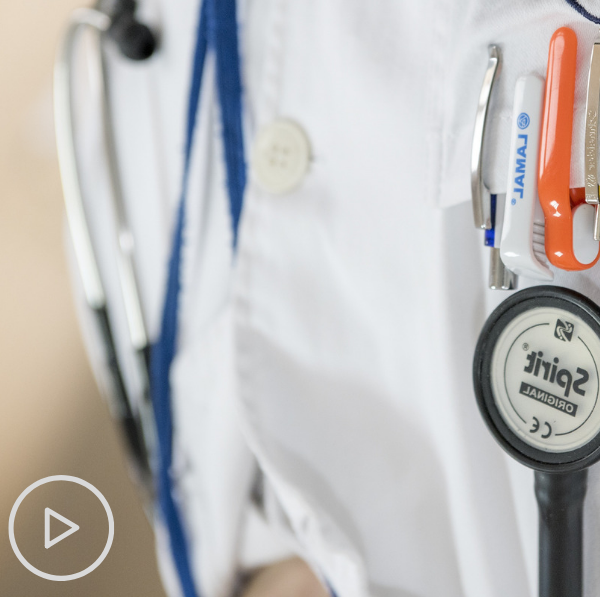
|

Effective AML Combination Treatment: Pairing Old and New Therapies |

|
Transcript:
For the past 30 years, we’ve had the same treatment options, which have been standard intensive induction chemotherapy that weren’t really tailored to individual patients and had significant toxicity. And not necessarily effective for all AML genomic subtypes.
Now we have quite a bit added to the treatment arsenal for AML, including continuing intensive induction chemotherapy for patients who are appropriate. There’s also been the addition for newly diagnosed patients for hypomethylating agents and a new BCL-2 inhibitor called Venetoclax. IDH inhibitors for patients with IDH1 and IDH2 mutations. The addition of FLT3 inhibitors for patients either newly diagnosed or with relapse or refractory disease.
And liposomal daunorubicin and cytarabine in for patients with AML with MDS related changes or therapy related AML that are newly diagnosed. Lastly, there’s also a hedgehog inhibitor, glasdegib, that’s been approved for newly diagnosed AML patients in combination with low dose cytarabine.
So, when working with patients, there are multiple factors that we take into consideration when coming up with a treatment decision together and it really should be a team approach. But one of the most important things is trying to understand the patient’s goals of care.
Because different treatments have different expectations, side effects, toxicities that we want to be sure we’re all aligned when we’re making a treatment decision together. Also, other features that we take into account can be age. Other comorbidities, including other diagnosis such as cardiovascular disease, diabetes and other medical issues patients may have.
So, for roles that patients have in making these decisions, they should know that they’re their own best advocate. And so, as you’re getting to learn your oncologist who’s helping you make these treatment decisions, it’s very important that you talk about things that are important to you in regards to quality of life, overall goals for your life. Ask questions in regard to side effects and expectations for outcomes for potential treatment. Whether they’re curative or more palliative, which can extend life. And for quality of life, it may not be curative for AML.
So, AML really was considered a single disease 30, 20 years ago. Now we really know it’s likely dozens of diseases based off of looking at molecular features of an individual patient’s AML. So, it’s very important to try to understand what genomic features your AML may have, meaning DNA mutations that are just present in the leukemia cells. Chromosomal changes as well. And then understanding if, based off that information, that that may afford you additional treatment options other than the current standards of care.
Effective AML Combination Treatment
Pairing Old and New Therapies
Effective AML Combination Treatment: Pairing Old and New Therapies from Patient Empowerment Network on Vimeo.
With advances in AML research and a number of new treatments, can older therapy types still play a role in care? Dr. Alice Mims discusses pairing early AML treatments with new agents to boost their effectiveness.
Dr. Alice Mims is a hematologist specializing in acute and chronic myeloid conditions. She serves as the Acute Leukemia Clinical Research Director at The Ohio State University Comprehensive Cancer Center – James.
See More From The Pro-Active AML Patient Toolkit
Related Resources
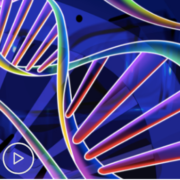
|

|

|
Transcript:
So, in regards to older treatments and being effective, seven plus three, which is an intensive chemotherapy, is still the standard of care treatment for patients with favorable risk AML, if they’re candidates for intensive treatments because it is potentially curative. And 7 + 3 is also the backbone for newly diagnosis for patients with FLT3 mutations, we add a FLT3 inhibitor called Midostaurin onto that, as it’s shows to improve overall survival with the addition of that compared to just the chemotherapy alone.
And also, hypomethylating agents, which are a less intensive treatment, were the standard of care for patients who couldn’t tolerate intensive chemotherapy.
And now we’re seeing the addition of other agents being added to this, like the BCL2 inhibitor of Venetoclax.
And recent data in phase 3 trial comparing the hypomethylating agent alone versus adding that agent did show an overall survival advantage. And so, these are definitely evolving, and I think as we are learning more about targeted therapies and how they can best be used in combination with chemotherapy other than single. Agent. But you give two targeted therapies together and having even better outcomes. We hope we continue to make improvements from where we were even just five years ago and do a better job for.
What is Personalized Medicine?
Dr. Elizabeth Bowhay-Carnes defines the often-misunderstood term “personalized medicine” as it relates to your genetic testing results and treatment decisions.
Dr. Elizabeth Bowhay–Carnes is Director of the Adult Non-Malignant Hematology Program and Co-Director of the Adolescent/Young Adult Oncology Program at Mays Cancer Center, home to UT Health San Antonio MD Anderson Cancer Center.
Related Resources

Predictive (Familial) Genetic Testing vs. Cancer Genetic Testing: What’s the Difference? |
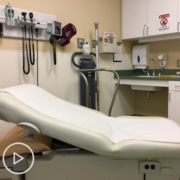
|

|
Transcript:
Dr. Elizabeth Bowhay-Carnes:
When doctors or people within the medical community use a term called personalized medicine, specifically we’re talking about some advanced testing that can be done on a patient’s DNA. Usually, this is talking about a specialized test that is called next-generation sequencing, and that particular test, next generation sequencing, is a technology that allows us to look deeper into a particular patient’s DNA or problems within the DNA of the cancer cell.
We then try to pick treatment options that match that patient’s particular problems with the DNA of their cancer cell. So, you will sometimes hear this particular technology referred to as personalized medicine, and usually we’re talking about next generation sequencing.
Finding Resources & Support in AML: A Patient Perspective on Giving Back
Casey Marsh, an AML patient advocate, shares advice on the importance of identifying resources and support when faced with a serious diagnosis, including her experience in connecting with The Leukemia & Lymphoma Society.
Casey Marsh is an AML survivor and patient advocate. Casey is giving back by volunteering for The Leukemia & Lymphoma Society and has been selected as Houston’s honored hero for the 2019 Light the Night.
See More From the The Pro-Active AML Patient Toolkit
Related Resources
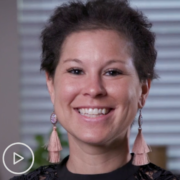
An AML Story: Casey Shares Her Stem Cell Transplant Experience |
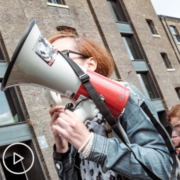
|

|
Transcript:
Casey Marsh:
If people with AML are seeking for any type of resources of support, I would highly recommend going to their healthcare team first for any local suggestions that they provide. So, going to your team, that opens up the doors to communicating about these types of resources that you can find. So, for instance, myself, I was communicating with one of my nurses, and through that nurse, I found out about the Leukemia and Lymphoma Society. And once they had given me that information about them, they actually reached out to me first. And from reaching out, they were able to establish that relationship, and then you may ask a lot more questions that you might’ve had or that you think of. And going through them actually opens the doors to an enormous amount of resources and support.
Now that I’ve been in my recovery for almost a year, I’m really investing myself in trying to give back. So, by doing that I have volunteered and teamed up with the Leukemia and Lymphoma Society to actually help them fundraise a lot of this money in awareness to people fighting leukemia and lymphoma. So, once I actually was discharged from the hospital last year, my husband and I celebrated our first wedding anniversary at Light the Night for the Leukemia Society. And ever since that, I have been drawn more and more to the program and what they offer to people.
So, I have actually been selected as Houston’s honored hero for the 2019 Light the Night, and I have also finished my official training to become a Leukemia and Lymphoma Society volunteer where I actually get to reach out to patients that are going through exactly what I went through.
So, I feel like going through all this a year later, this is where I’m supposed to be, and that’s to be giving back and educating people that are going through something similar to what I went through.
Why Speaking Up Matters: Tips from an AML Advocate
Casey Marsh, an AML patient advocate, talks about self-advocacy when diagnosed with a serious illness and provides tips for speaking up to your healthcare team to get your questions answered and overall better care. Download the Find Your Voice Resource Guide here.
Casey Marsh is an AML survivor and patient advocate. Casey is giving back by volunteering for The Leukemia & Lymphoma Society and has been selected as Houston’s honored hero for the 2019 Light the Night.
See More From the The Pro-Active AML Patient Toolkit
Related Resources

An AML Story: Casey Shares Her Stem Cell Transplant Experience |

|
Transcript:
Casey Marsh:
Self-advocacy means to me basically your self-awareness. Knowing what you would want as an outcome, what your goals are, what your objectives are, and what are you going to do to achieve those. So, by being self-aware, you know what you expect out of people, and you know what to make out of a situation. So, if you take that into account with your diagnosis, I feel like your self-advocacy will help basically promote a healthy treatment plan and a healthy recovery.
I would say to those individuals that are nervous to speak up to their healthcare team to think about what really the consequences are by asking a question.
Will they be turned away? Will they not receive treatment if they do? I have never heard a story about that. So, I want them to ultimately think about what are the consequences to asking a question. They’re really not negative, so, therefore, there should not be any type of discouragement to go and ask what you’re feeling. And personally, I think of this as a team, and to build a good team, you have to build that trust, and you have to know everybody on that team’s strengths and weaknesses.
And you know, as a patient, you know your body best. And although you might have a healthcare team that understands and studies the body, they don’t know what you feel. And so, it’s important for you to stay in tune and be a team player and play your part.
And sometimes that part is having to ask those questions that might be a little nerve-wracking, but again, if we don’t ask questions, then we can never find answers. And by doing these questions, we’ve come such a long way in our research. So, I encourage everybody to have a voice. You need to speak up, and don’t be afraid because the consequences are not harmful.
An AML Story: Casey Shares Her Stem Cell Transplant Experience
Casey Marsh, from Alvin, Texas, was diagnosed with AML in 2018 at the age of 31 after experiencing persistent flu-like symptoms. After being transferred to The University of Texas MD Anderson Cancer Center, she went through her first round of chemotherapy successfully. However, a genetic mutation was discovered and she was recommended for stem cell transplant. Watch her inspiring and uplifting story.
Casey Marsh is an AML survivor and patient advocate. Casey is giving back by volunteering for The Leukemia & Lymphoma Society and has been selected as Houston’s honored hero for the 2019 Light the Night.
See More From the The Pro-Active AML Patient Toolkit
Related Resources

|
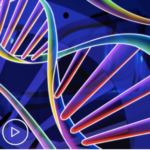
|

|
Transcript:
Casey Marsh:
I was diagnosed last year, in 2018, with AML by just feeling flu-like symptoms, and after I had visited the urgent care, I kinda questioned still what was going on with my body. And the fourth time I went in, they had found that my heart rate was really high, and my blood pressure was very low, and I was sent to the ER that same day.
At the ER, I had found out that my hemoglobin level was at a three point seven, which was very high risk, so they took me in to a different hospital at that time to receive my first blood transfusion. After the blood transfusion, went into several different tests, and about three days later I was diagnosed with AML.
I found my healthcare team originally by going to UTMB Galveston, just due to the distance and location from where I was, but once I was officially diagnosed with AML, that healthcare team at UTMB suggested that I go and receive my treatment at MD Anderson.
After that, I was transferred only about a day later, and I met my healthcare team at MD Anderson by going through the ER and then being transferred into the inpatient care.
At MD Anderson, they did redo all of the prescreening tests. I did have another bone marrow biopsy procedure done, and all that was handled right through the ER. And then once they got all of those tests in, they actually sent me to a floor, and the next day the doctors had a plan.
So, my initial treatment that I first heard from the doctors was I was just gonna have to receive about six to eight rounds of chemotherapy, and once I go through the first round, I was actually put into remission. But unfortunately, right after that, they discovered that I had a chromosome mutation that was gonna cause relapse. Therefore, they wanted to proceed with one more round of chemo, and then I would be placed to go into a stem cell transplant.
So, when I heard that I needed the stem cell transplant, I first was a little bit curious as to what it was. So, I did ask a few people to explain it a little bit better, but if this was an option to help me get through this, then I was 100 percent on board. So, it was kind of an easy decision for me to make because I was all about fighting this and taking this cancer and getting rid of it for, hopefully, all of my life. So, if this was the option that they were giving to me, I was gonna take it.
I’m actually very blessed to have five siblings, all full blood, and three of those siblings were perfect matches, 100 percent. And I even had one more almost perfect match with them. So, they had chosen my brother that is the closest in age and the closest in weight to me to be my donor.
And so, he hopped on a plane from Florida, came in right away, and I got to go with him to the hospital and actually be his support system through all of it, which was awesome.
So, the first part of my stem cell transplant was getting the chemo, and this chemo was the ultimate “bad boy” chemo. And I remember that one being the worst and feeling that.
And once that chemo was done, they gave you about a couple days recovery, and then you went into your stem cell transplant. And it’s a very exciting day. They make it awesome on the floor at MD Anderson because it is your new birthday, and so they celebrate it as if it’s your new birth. So, you can walk around anywhere on that floor, and you can see people celebrating with posters and balloons and cards. And when they actually come in to do the stem cell transplant, it’s just given through almost an IV drip, and so if you hold your cell phone up to it with a bright light, you can see the stem cells going down.
You really can’t feel anything; it honestly just feels like hydration or fluid going through you. But it was a very easy process, and it lasted no longer than two hours.
You feel great the next few days, and then you do have a few side effects. And all of this I was inpatient for, so they were there to document and ask questions and observe everything each of those days.
So, probably a week after the stem cell transplant was when I started seeing some of those side effects happen, but what was really nice through all of that is they always encourage you to be active.
So, I would go to exercise class. I would have to walk the halls, and they ask that you’re doing almost a mile a day. So, it was really good to have that support system and understand that even though you just had a serious transplant done that they’re still really encouraging to get you back to what they want you to be at. So, once that process was done and I was more active and was able to eat and drink on my own – I think it was about 34 days – I was released back to my house to recover. And since I do live locally to MD Anderson, I was able just to commute back and forth, but I was required to come back almost every day in case I needed to receive any more transfusions and also to have my bloodwork taken every day.
I did that for about two weeks, and then it gradually went down to three or four times a week, and then it was twice a week, and then we got down to once a week. And now, over a year later, I now see the doctors about every other month.
Being one year out from my transplant, I’m feeling fabulous.
I feel so strong. I feel really great, and I’m very blessed and very thankful to have such an easy recovery. I shouldn’t say easy. There were some struggles throughout that, but I do feel very grateful to look back on that and see what kind of opportunities that transplant has given me. It opened up a lot of doors for me to build both my strength and my mental stability.
The support my friends and family gave me was everything. I am still speechless to this day about what they have done for me, and it was the minute that they had found out, we had a system going. Somebody was already taking care of my classroom since I wasn’t going to be able to teach. They were taking care of my students, they were planning meal plans for us, they were arranging different flights for family to come in and see me.
They were making arrangements for my husband and my dogs to get help at home, and just the amount of messages of love that came through was everything I needed to kickstart. And it was very easy for me just to put my blinders on to everything negative in this and to focus on everything positive because of them.

